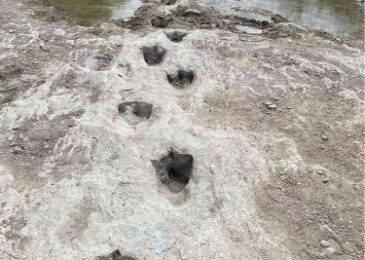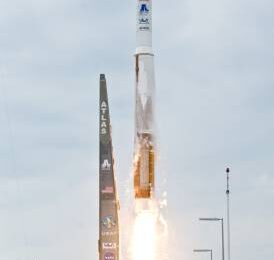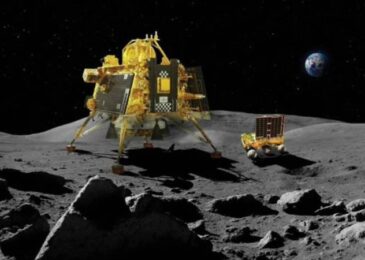NASA is set to exhibit the prowess of laser communications from the confines of the International Space Station (ISS). This colossal spacecraft, akin to a football field, perpetually encircles Earth and serves as a research outpost for comprehending life and work in the cosmos. Over two decades, it has been an invaluable stage for delving into diverse domains such as biology, technology, agriculture, and more. Among its functions, the ISS hosts astronauts executing experiments that also drive the evolution of NASA’s space communication proficiencies.
In the year 2023, NASA will dispatch a technological demonstration called the Integrated LCRD Low Earth Orbit User Modem and Amplifier Terminal (ILLUMA-T) to the ISS. The combined efforts of ILLUMA-T and the Laser Communications Relay Demonstration (LCRD), launched in December 2021, will culminate in NASA’s inaugural bidirectional, end-to-end laser relay system.
Through ILLUMA-T, NASA’s Space Communications and Navigation (SCaN) program office will showcase the potential of laser communications from the ISS. Laser communication employs imperceptible infrared light to transmit and receive information at accelerated data rates. These heightened rates empower missions to dispatch a greater volume of images and videos to Earth in each transmission. Following its installation on the ISS, ILLUMA-T will demonstrate the benefits of elevated data rates for undertakings in low Earth orbit.
Former deputy associate administrator for NASA’s SCaN program, Badri Younes, emphasized, “Laser communications offer missions more flexibility and an expedited way to get data back from space. We are integrating this technology on demonstrations near Earth, at the Moon, and in deep space.”
Beyond the augmented data rates, laser systems are more lightweight and energy-efficient, a crucial advantage for spacecraft design. ILLUMA-T, roughly the size of a standard refrigerator, will be affixed to an external module on the ISS to carry out its joint demonstration with LCRD.
Presently, LCRD is illustrating the perks of a laser relay in geosynchronous orbit, situated 22,000 miles away from Earth. It accomplishes this by transmitting data between two ground stations and conducting experiments to hone NASA’s laser capabilities.
“After ILLUMA-T is stationed on the space station, the terminal will dispatch high-resolution data, encompassing images and videos, to LCRD at a velocity of 1.2 gigabits-per-second,” explained Matt Magsamen, deputy project manager for ILLUMA-T. “Subsequently, the data will journey from LCRD to ground stations in Hawaii and California. This demonstration will underscore how laser communications can amplify missions in low Earth orbit.”
ILLUMA-T is scheduled to launch as a payload on SpaceX’s 29th Commercial Resupply Services mission for NASA. In the initial fortnight post-launch, ILLUMA-T will be detached from the trunk of the Dragon spacecraft and mounted onto the Japanese Experiment Module-Exposed Facility (JEM-EF) of the ISS, also referred to as “Kibo,” signifying “hope” in Japanese.
Following the payload’s integration, the ILLUMA-T team will execute preliminary tests and in-orbit assessments. Upon successful completion, the team will initiate the process for the payload’s “first light,” a pivotal milestone wherein the mission beams its inaugural laser light through its optical telescope to LCRD.
Upon achieving first light, the mission will embark on data transmission and laser communication experiments, which will persist throughout the mission’s planned duration.
Pioneering Laser Experiments in Diverse Scenarios In forthcoming ventures, operational laser communications will complement prevailing radio frequency systems, predominantly utilized by space-based missions to relay data. ILLUMA-T isn’t the maiden initiative to probe laser communications in space, but it significantly advances NASA’s strides toward integrating this technology operationally.
Alongside LCRD, ILLUMA-T’s precursors encompass the 2022 TeraByte InfraRed Delivery system, presently evaluating laser communications on a diminutive CubeSat in low Earth orbit; the Lunar Laser Communications Demonstration, which transited data between lunar orbit and Earth during the 2014 Lunar Atmosphere and Dust Environment Explorer mission; and the 2017 Optical Payload for Lasercomm Science, which showcased how laser communications expedite the exchange of information between Earth and space compared to radio signals.
The endeavor to assess the ability of laser communications to achieve elevated data rates across a spectrum of situations will aid the aerospace community in refining this capability for forthcoming missions to the Moon, Mars, and interstellar space.
Disclaimer: The views, suggestions, and opinions expressed here are the sole responsibility of the experts. No Digest Pulse journalist was involved in the writing and production of this article.





